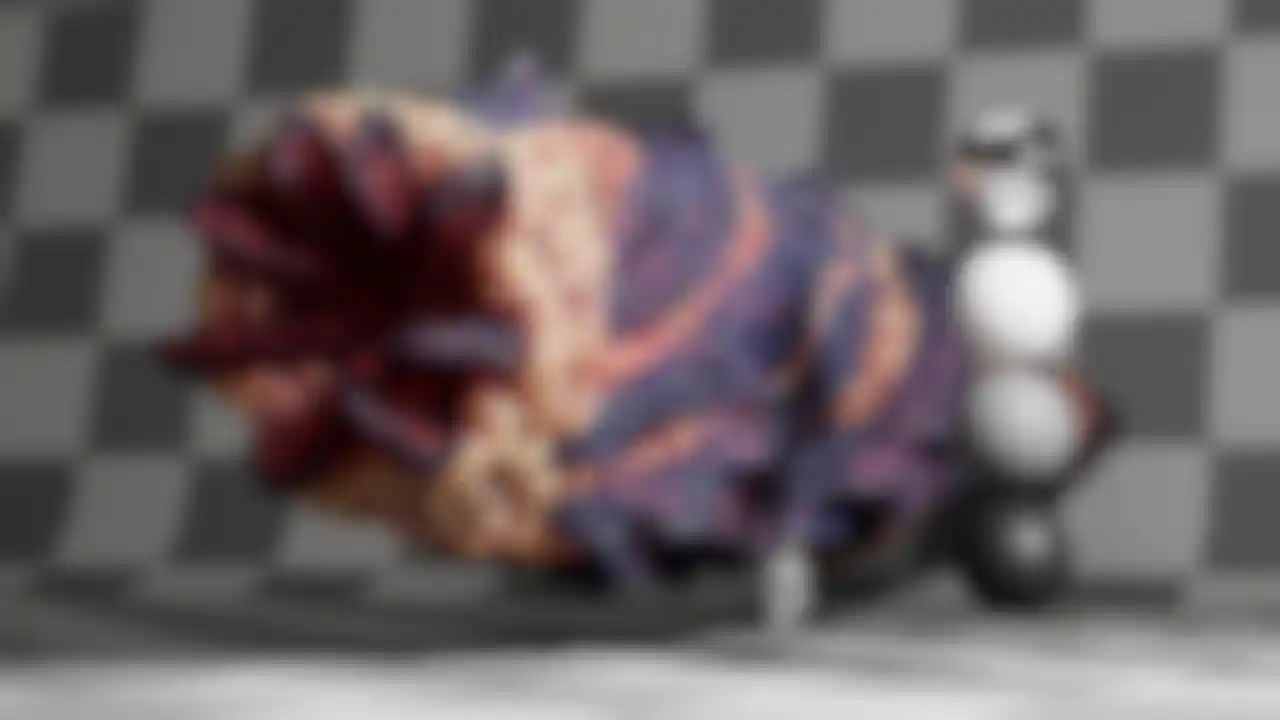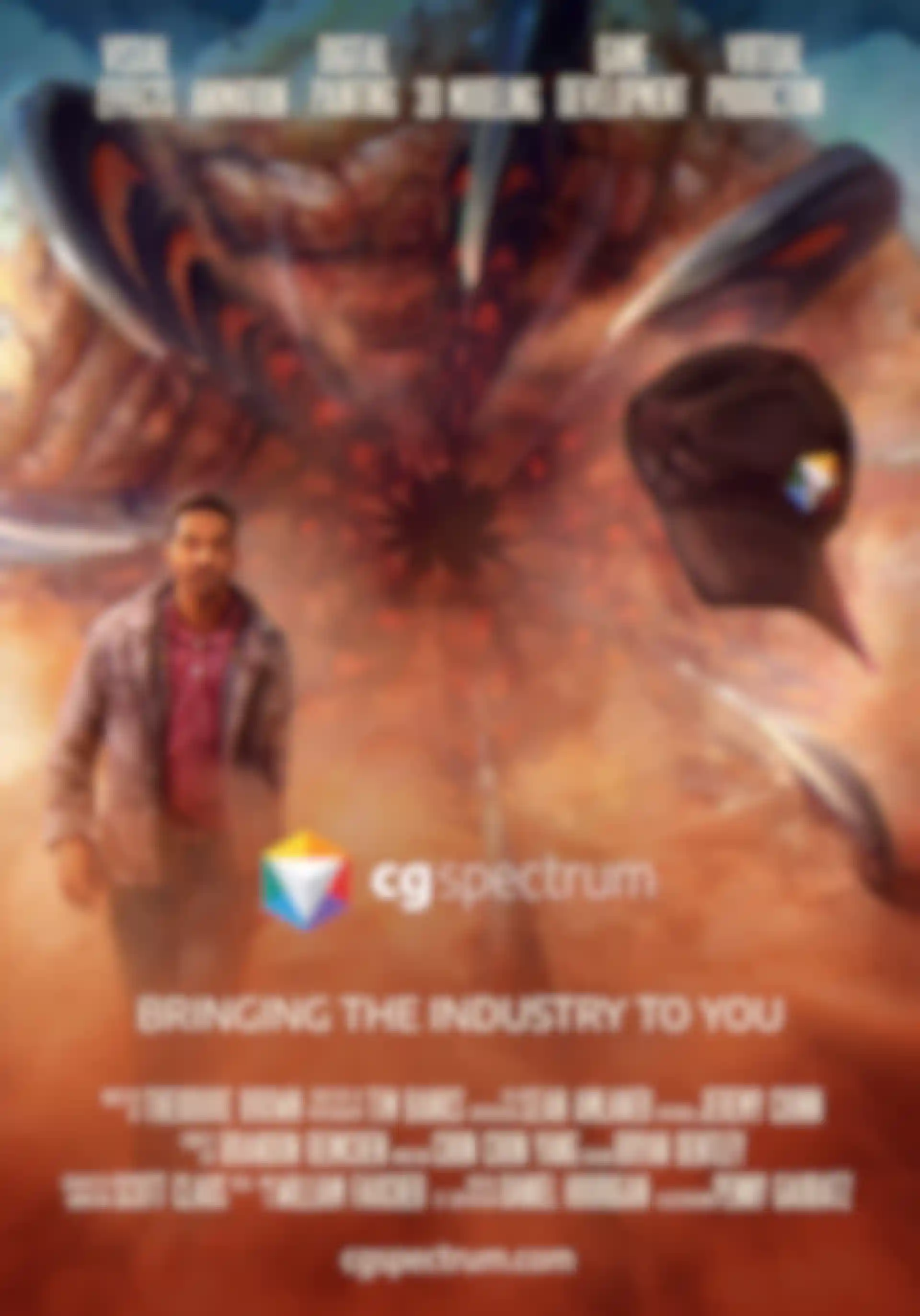
Learning 3D and VFX From the Pros CG Spectrum’s Dune-inspired video shows prospective students what they can expect from the school’s top-ranked training for the film and game industry.
In recent years it was common for 3D artists to be self-taught but these days, more and more people are opting to go to school to learn the tools of the trade. While some schools use students' work to demonstrate course offerings, the team at CG Spectrum flipped the script by having their talented team of department heads and mentors create a Dune-inspired promo video.
We spoke with CG Spectrum’s Brandon Reimchen, department head of concept and illustration and Chun Chun Yang, 3D modeling mentor and character material artist about how they made the promo using ZBrush and other tools, as well as how they teach the 3D artists of tomorrow.
How did you come up with the idea to have staff make the promo video?
Reimchen: We were inspired by the recent “Dune” remake and the Star Wars series, “The Mandalorian.” The visual effects on those productions are outstanding. We wanted to capture the imagination of prospective students and show them they're in good hands at CG Spectrum where they can learn industry-standard tools and techniques from pros who practice what they preach. Our students are personally mentored by industry professionals with years of experience working at major studios on blockbuster films and best-selling video games.

Why does CG Spectrum think it’s important for students to learn ZBrush?
Reimchen: ZBrush is becoming an essential tool for artists, particularly concept artists who want to work in the film and game industries. Using ZBrush for concepting allows the initial designs to be closer to how they will be used in the actual 3D production.
Being familiar with sculpting and the 3D production pipeline is a necessary skill for new students, and our Advanced Concept Art Course gets them up to speed.
Yang: I teach all my students ZBrush. It makes the modeling and sculpting process more artistic and less technical and speeds up the asset-creating process.
Brandon, tell us about yourself and your role at CG Spectrum.
Reimchen: I have worked as a concept artist, primarily in the video game industry, since 2005. Some of my clients include EA, Activision, Capcom and Disney Interactive and I’ve created art for games like “Crash Bandicoot,” “Prototype,” and “Resident Evil.”
Recently, I moved to freelance work while also being the department head of concept art and illustration here at CG Spectrum, where I built the concept art program from the ground up.

Chun Chun, describe your role as a mentor how you contributed to the promo?
Yang: I am a modeling mentor at CG Spectrum, and I help students with weekly modeling guidance and provide feedback on their work. My role in the commercial was to create the 3D model of a Dune-like sandworm based on Brandon’s concept design, as well as creating the materials for the model. I used his sculpt as a starting point to build the base model of the sandworm, then did an additional sculpt on top of that to create a high-resolution model.
Tell us a little about your process and the tools you used.
Reimchen: We used a wide variety of software and tools, depending on which step in the VFX production pipeline each team member was working on. Some of those tools, which were used by other departments, included Houdini for FX and layout blocking; Unreal Engine for lighting, look development and final layout; Nuke for compositing; MochaPro for tracking/compositing; and DaVinci Resolve for editing.

As concept artist, I began by sketching a thumbnail in Photoshop to get the proportions of the sandworm right. Next, I moved into ZBrush to sculpt a basic model where I could quickly produce volumes and elements like the beak and teeth, shell and the spines.
I wanted to iterate quickly by using simple tools like ClayBuildup, DamStandard and SnakeHook to easily push and pull the form to arrive at the point where I can start to see the volume take shape.

ZBrush can create multiple SubTools (separate parts that can be used in layers similar to the way they are used in Photoshop). These SubTool layers make it easier to build whatever subject matter you're working on, particularly when it has separate components like the beak or pincers in the mouth of the sandworm. Once I was happy with the basic model, I gave it a quick paint and exported a render to Photoshop where I finished the painting.
What happens once your concept model is ready?
Reimchen: When I build something in ZBrush, it's more for me to get a sense of lighting and volume fairly quickly to achieve a rough pass that I can use to paint on top of. The ZBrush sculpt won’t necessarily be production ready, but it is enough for me to pass on to a modeler, who should be able to see where I was headed.
Yang: I first used ZBrush’s Dynamesh to sculpt out all the details, then moved to ZRemesher to create base geometry for the UV process and texturing. I used Maya for the UV unwrapping and Substance 3D to create the final textures.

Describe the creative process for designing the shell elements.
Reimchen: For the shell elements I had to think of something that would function in reality, allowing the worm to drill through sand and rock while still providing structure and protection for the creature. For inspiration, I looked to drill bits and animals with hard shells that enable them to cut through and move among freshly carved rock or through very abrasive surfaces.

Is there any advice you would like to share about working as a concept artist?
Reimchen: Artists just starting out can definitely get by with a basic understanding of ZBrush sculpting and then learn more on the job. One of the most challenging things about ZBrush is getting used to the user interface, as it is very different than other 3D software, so you need to take the time to get used to it.
And as with any project, there is always a feedback loop when creating concept art for a film or game, and our commercial was no exception. We had to try a few versions of the sandworm before we felt we had landed on something that would communicate what we needed and that would fulfill the brief. For aspiring concept artists, receiving feedback and applying it to your work is a huge part of the process.